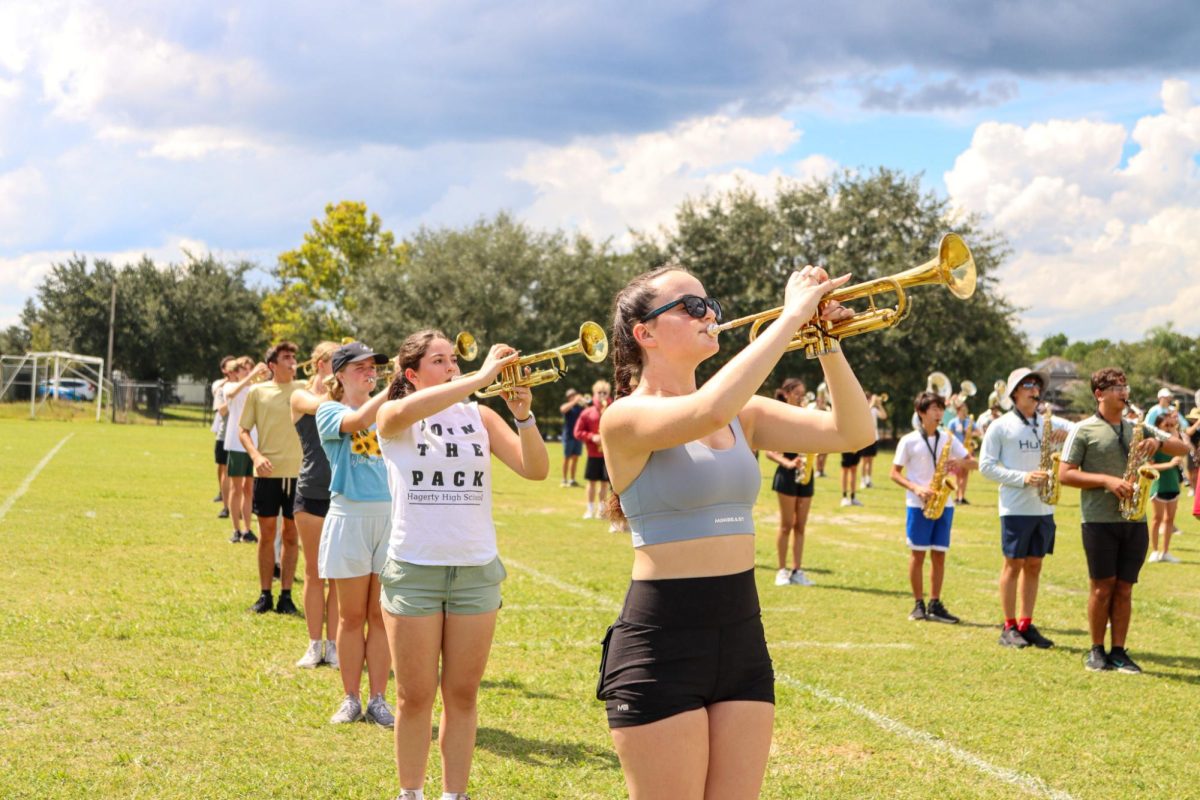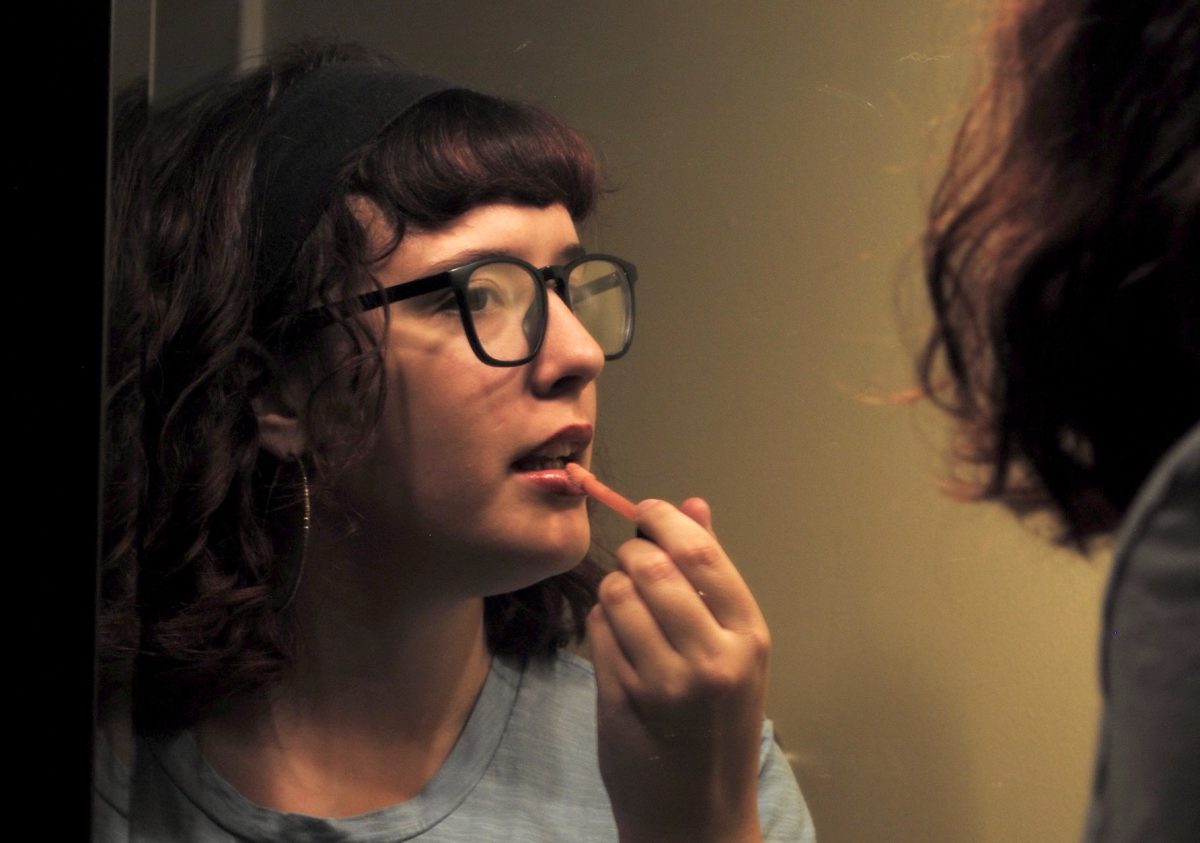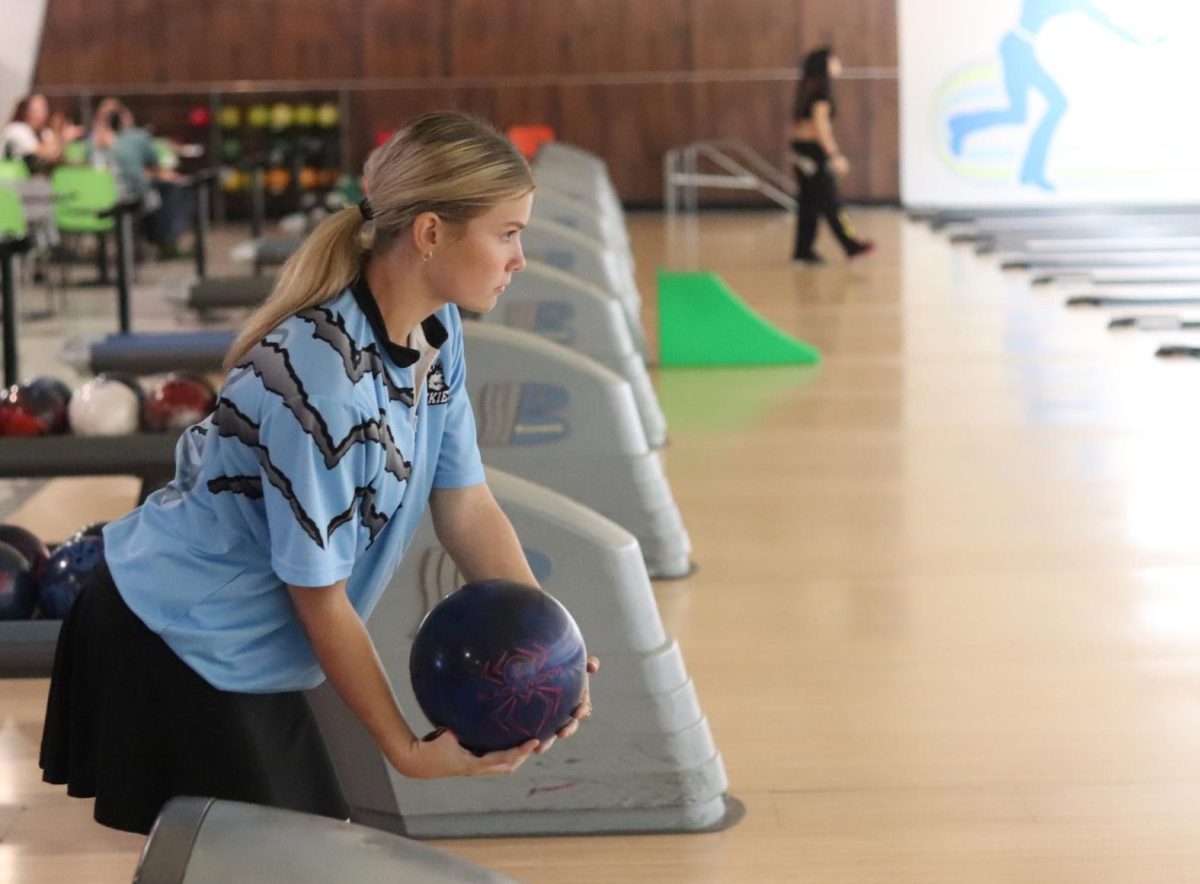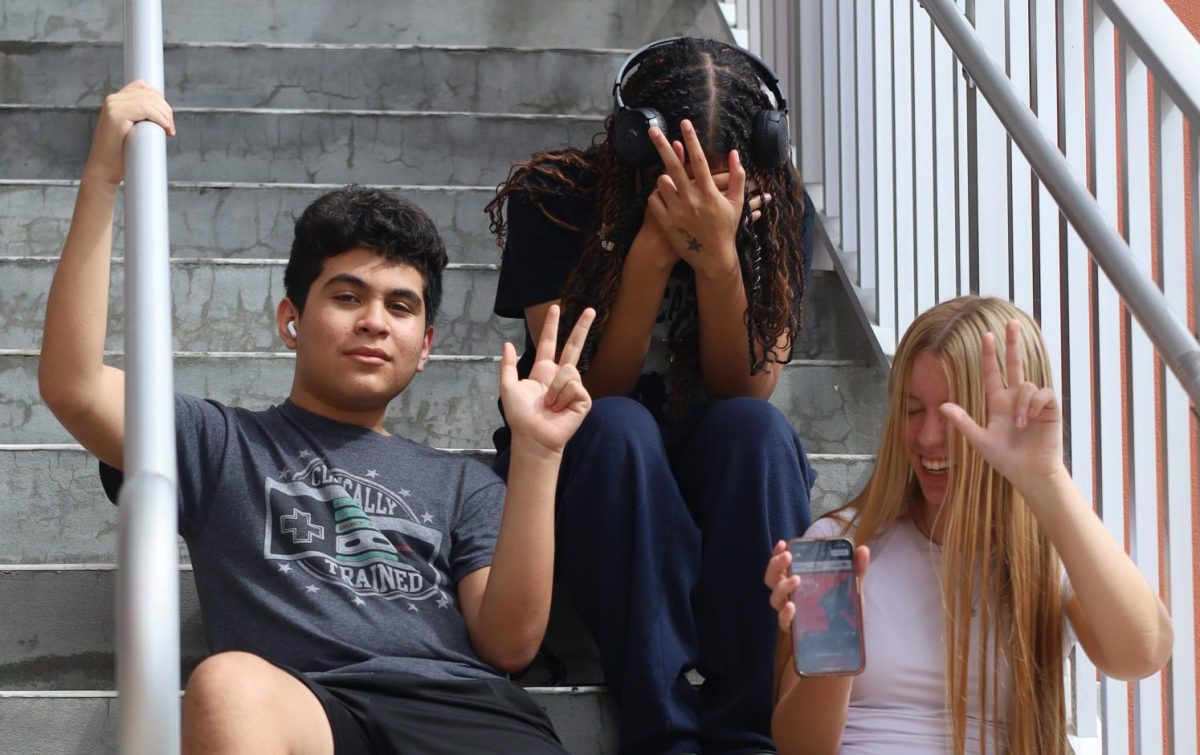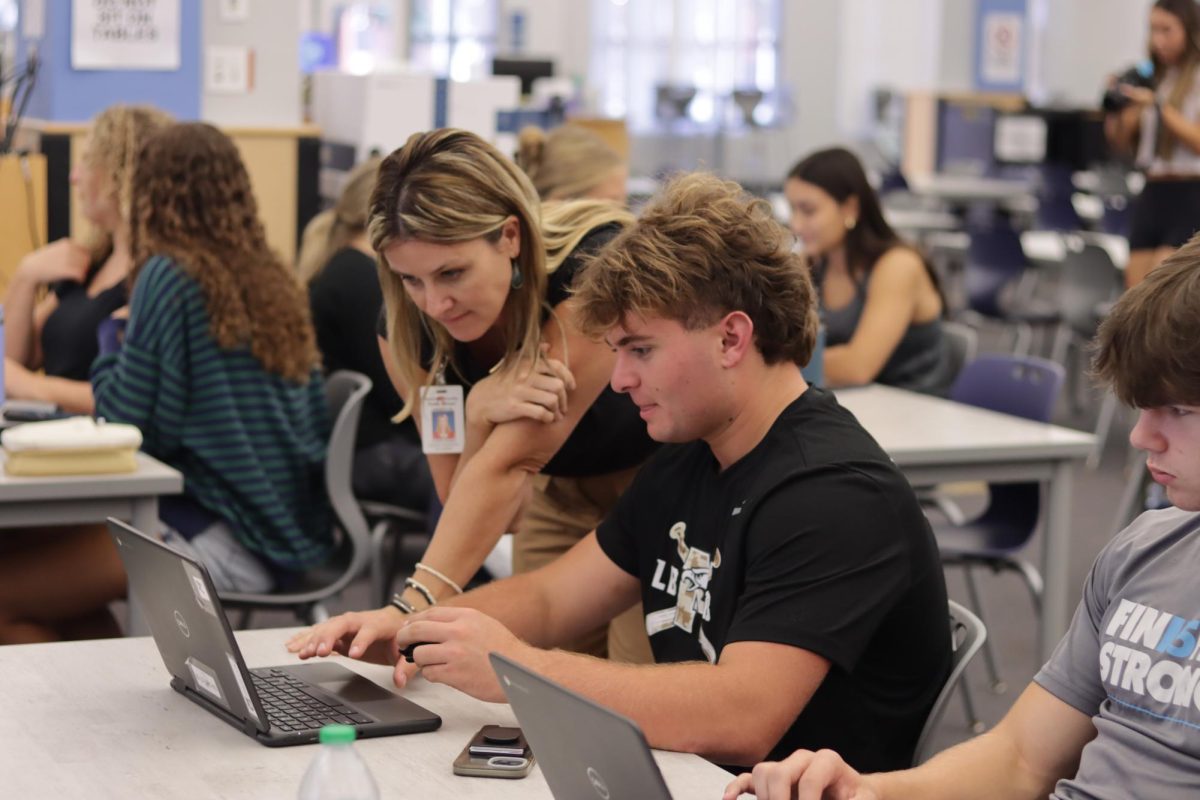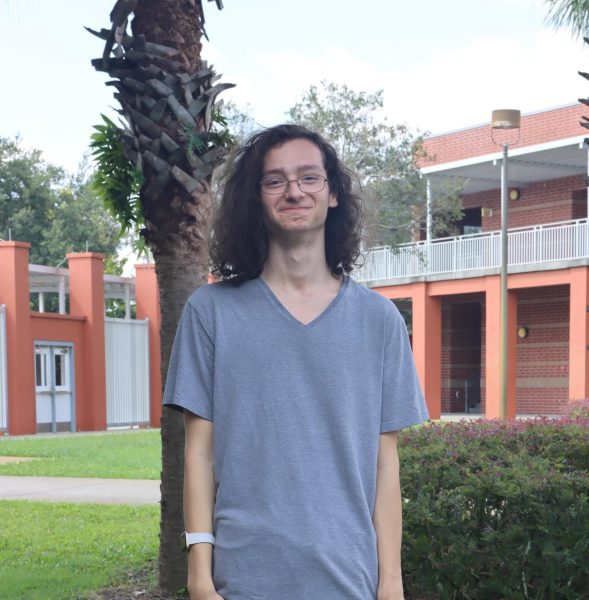
Junior Olivia Davis wanted to share her interest in philosophy with other students after multiple philosophical discussions in her AP Lang class. However, with no pre-established space to share this interest she was determined to create her own club.
“I felt like I wasn’t very involved in school because I didn’t have an area that I was too interested in,” Davis said. “I figured philosophy is something that isn’t popular around school, but enough people would be interested in joining a club for it.”
THE PROCESS
To begin the creation process Davis first had to find a teacher or staff member who could sponsor the club so she could continue with the application process. She then had to “pitch” the idea to assistant principal Christy Tibbits-Bryce who is in charge of all club activities on campus.
“I send them a Google Doc, and they have to tell me what the club is about,” Tibbits-Bryce said. “What purpose it’s going to serve, some ideas for community service that they’d like to participate in, who can join, what officers they will have in the club [and] if they’re charging dues.”
All clubs are split into three categories based on size: black, blue and silver. While black and blue clubs serve a specific purpose or community, silver clubs are designated as interest clubs, places for people with the same interest to discuss and share it with their peers. However, for those not in the know these labels can be quite confusing.
“I wasn’t aware of the labels [for] the different levels of clubs,” Davis said. “I knew there was some difference since some clubs require more from members, but I didn’t know there were official lanes separating them.”
All clubs regardless of size or category have to conform to a certain set of rules: maintain at least 10 members, participate in at least one volunteer opportunity per semester and attend a monthly meeting for the InterClub Council.
“It’s hard to keep track of all clubs, because there’s so many, and they’re going on at all different days of the week. So I look to the [InterClub Council] to keep control of the clubs [and] make sure they’re doing what they’re supposed to do,” Tibbits-Bryce said.
THE ICC
The InterClub Council is the governing body over clubs. The ICC, led by leadership teachers Kari Miller and Sarah Bearss and the greater leadership board, is in charge of keeping track of clubs, making sure they complete their community service requirements and listening to the wants and needs of the clubs and their leaders.
“I think the rules give the clubs structure and some purpose outside of it just being the general interest around which students meet. If you want to be a school-affiliated club then everyone should have to follow the same rules,” Bearrs said. “If clubs don’t like the rules or requirements, then that’s when they should think about the purpose behind the club.”
Many club leaders dislike the requirements as they feel it limits their ability to provide an enjoyable experience for their members.
“My focus on the club is having fun, and that’s what I feel clubs should be,” Film Club president Eastin Mathies said. “If [administration] introduce[s] something that doesn’t really align with my values with the club, I don’t do it, because if it’s something that’s not going to help the members to have fun, then I don’t think it has any place being in a club.”
Most club leaders, however, adapt to the rules and create a system to fulfill the requirements.
“The [ICC] expectations really aren’t that hard. You just have to be sure that you go to the meetings,” Women in STEM co-founder Valeria Romero said. “You have to make sure that you’re doing at least one service event per semester, which isn’t hard. Leadership [offers] schoolwide events, so you can donate to the toy drive or clean up campus.”
WHERE ARE ALL THE SILVER CLUBS?
There are currently eight silver clubs on campus: Chess Club, Drawing Club, Engineering Club, Fashion Club, Italian Club, Majorettes Club, Marine Biology Club and Women In STEM. Despite this, the process of joining one can be challenging as they are constantly shutting down or disappearing.
“Silver tiered clubs have always been our smallest group. They come and go with the students who are at the school,” Bearrs said. “Often, if an upperclassmen starts a silver club, it is rare for it to continue after they graduate unless they are able to recruit similarly passionate members who are willing to take it over.”
Silver clubs don’t only dissolve when their senior leadership leave but also when their sponsor does, as was the case for the Future Investors of America. When sponsor James Baird III retired earlier this year, the club effectively ceased to exist.
Many people are unaware of where or when clubs on campus meet. This is caused by many reasons; the out-of-date club list on the HHS website, the lack of organization between clubs and the small amount of advertisement.
Some clubs, such as the Drawing Club and the now-defunct Shakespeare Club seem to disappear suddenly. For junior Olivia Hamby, who has an interest in art, attempting to join the Drawing Club was a difficult process.
“I joined the Drawing Club through a friend because there wasn’t a clear-cut way to do it on my own. My friend was a part of it, and he’s also in government, so he helped me join,” Hamby said. “The Instagram was really hard to find and It’s also private, so it’s hard to get hold of them and learn about meetings.”
Additionally, silver clubs struggle to find members who share a genuine passion, and many have to adjust the club to meet member interests.
“I want the club to be like liquid. I want anything to change at any point around what the members want. It really is a member driven club,” Mathies said. “I don’t have any personal agenda. I don’t come in there and say ‘I want you to do this or that’.”
A prominent problem faced by interest club leaders is ironically the lack of interest in the topic. There are only so many people who can spare their time and those people only have so much time they can spend after school on any given day. And as clubs change leadership and members become eligible for honor societies, they tend to leave interest clubs behind.
“I feel like there has been a recent decrease in [silver clubs]. It really comes down to just people not being on campus as much, people not caring as much, the whole student morale and school spirit being down, causing people to just not want to be at school longer, and causing these clubs [to lose members],” club leader and founder Antonio Pizza said. “If you look at the black tier clubs, those people will get kicked out of the club if they don’t attend a meeting. So I think [Silver] clubs are being [ignored] now.
Pizza has been a prominent club leader, founding both the Chess and Italian Clubs and acting as vice president of the Film Club. Due to his intimate involvement with many clubs, Pizza fears for the future of clubs and what that means for campus as a whole.
“I know people who started clubs just because they wanted to throw it on [their college] essay and I’m afraid that those clubs are going to be the ones that die,” Pizza said. “If we didn’t have any of the clubs or any of the extracurriculars that our school offers, we would just be a high school. It’s the clubs that we have that build a community within the school that allows the students to have school spirit.”


